For our research, we use a series of experimental setups featuring state-of-the-art eye trackers with different tracking capabilities.
Manual Interception Setup
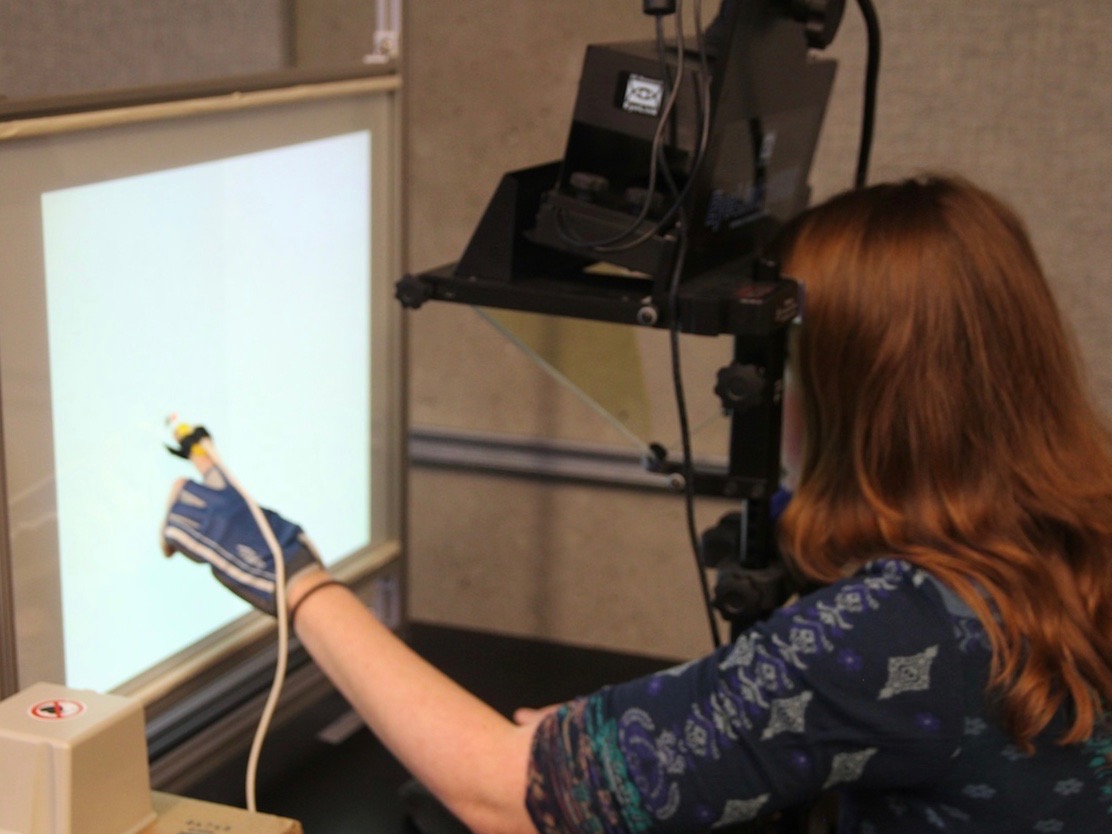 |
Hardware
Application This setup allows us to simultaneously record 2D eye and 3D hand positions. We use this setup to study eye and hand movements in naturalistic manual interception tasks (Fooken et al., J Vis, 2016; 2018; Fooken & Spering, J Vis, 2019; Kreyenmeier et al., J Neurophysiol, 2017). |
Kinarm Setup
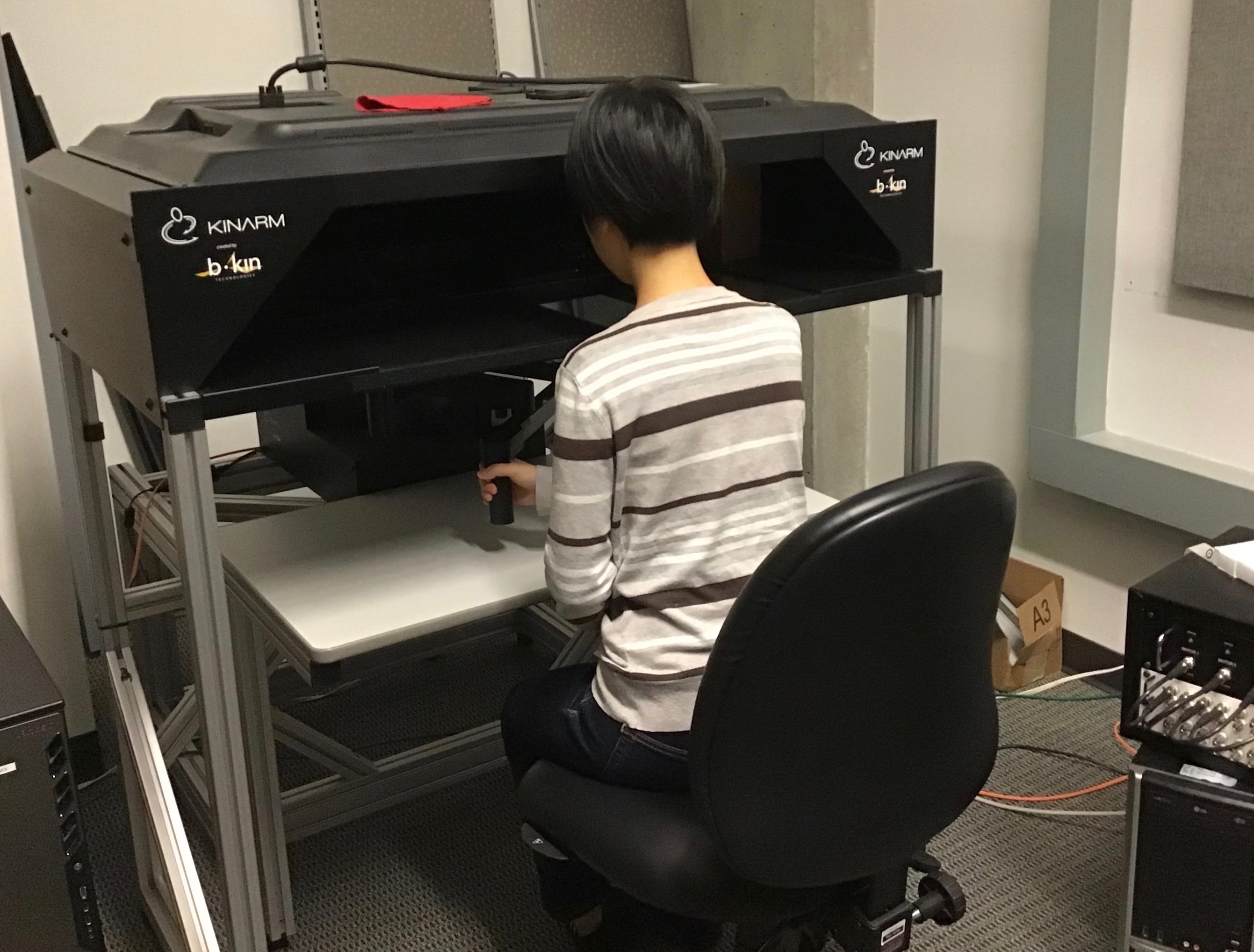 |
Hardware
Application Our KINARM End-Point Lab allows us to simultaneously study eye and hand movements with high precision. We are currently using this setup to study eye-hand coordination in online reach correction (De Brouwer et al., in prep). |
Dual Purkinje Image eye tracker
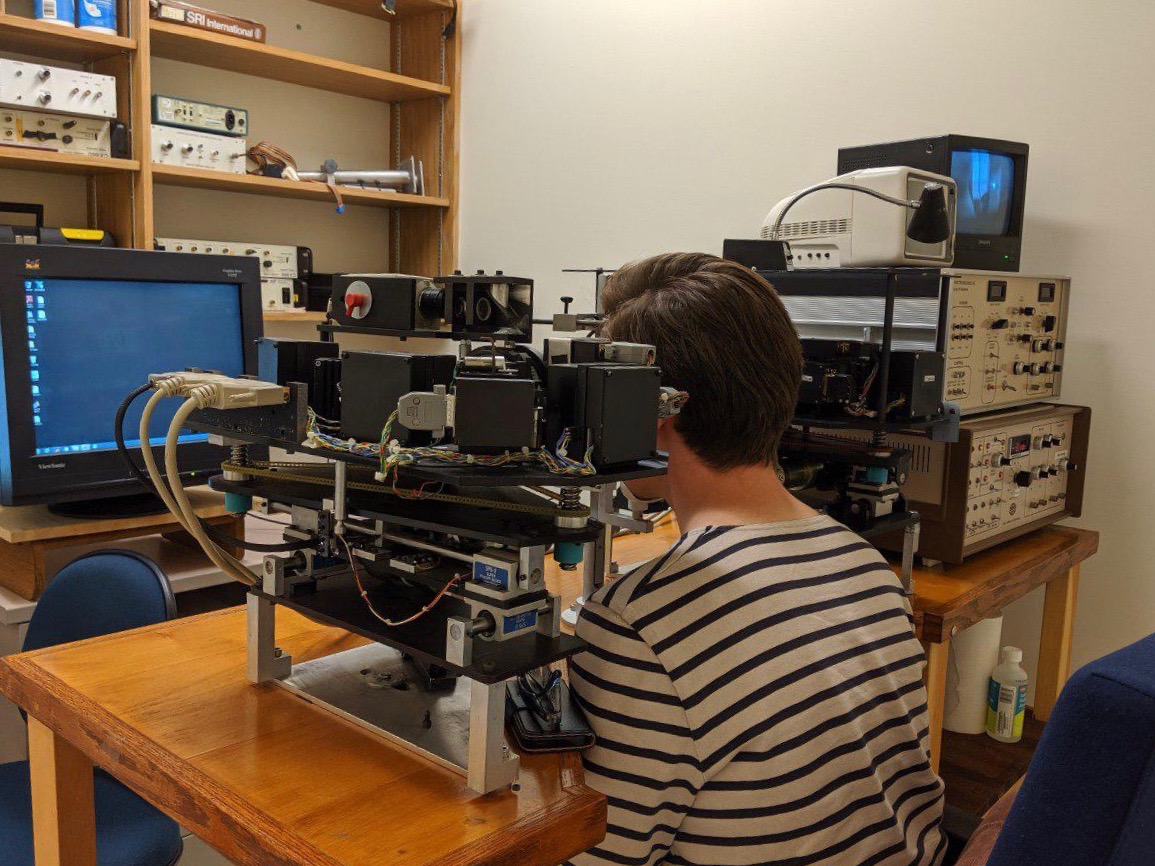 |
Hardware
Application We use this eye tracker to study how visual and cognitive signals drive and modulate smooth pursuit eye movements (e.g., Brielmann & Spering, J Exp Psychol: Hum Percept Perform, 2015). In contrast to common video-based eye trackers that use the pupil center as a reference, the DPI eye tracker utilizes the fourth purkinje image, allowing eye movement recordings with spatial accuracy of >1 min of arc. |
Desk-mounted video-based eye tracking systems
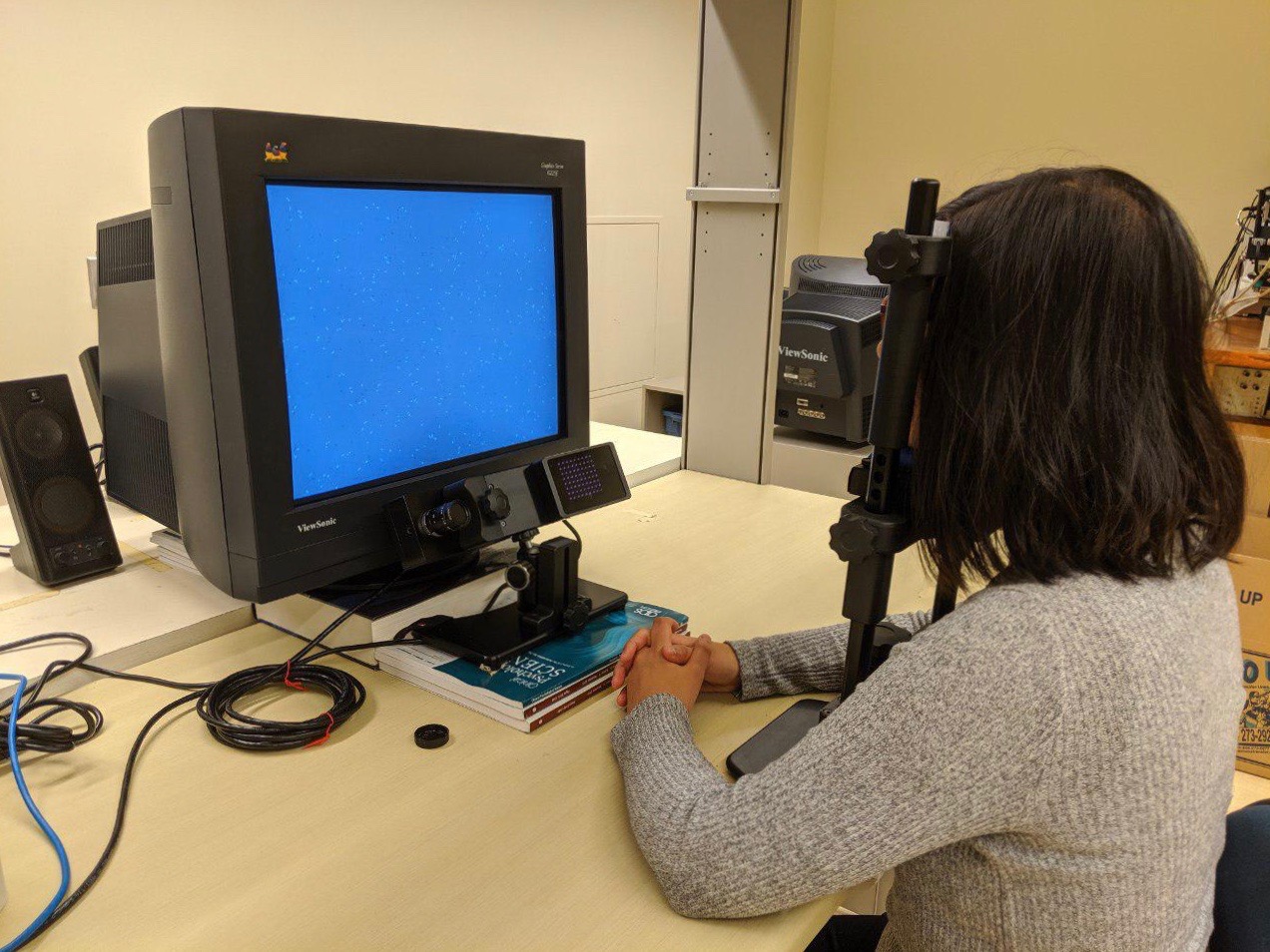 |
Hardware
Application This set-up allows us to examine 2D eye movements and pupil responses. We use this set-up to study the relationship between eye movements and visual perception in different populations including healthy adults, healthy children and those with amblyopia (Meier, Giaschi, & Spering, in prep.), patients with neurological deficits (Ming et al., Invest Ophthalmol Vis Sci, 2016), and high-performance athletes (Palidis et al., Plos One, 2016). |
Head-mounted video-based eye tracking systems
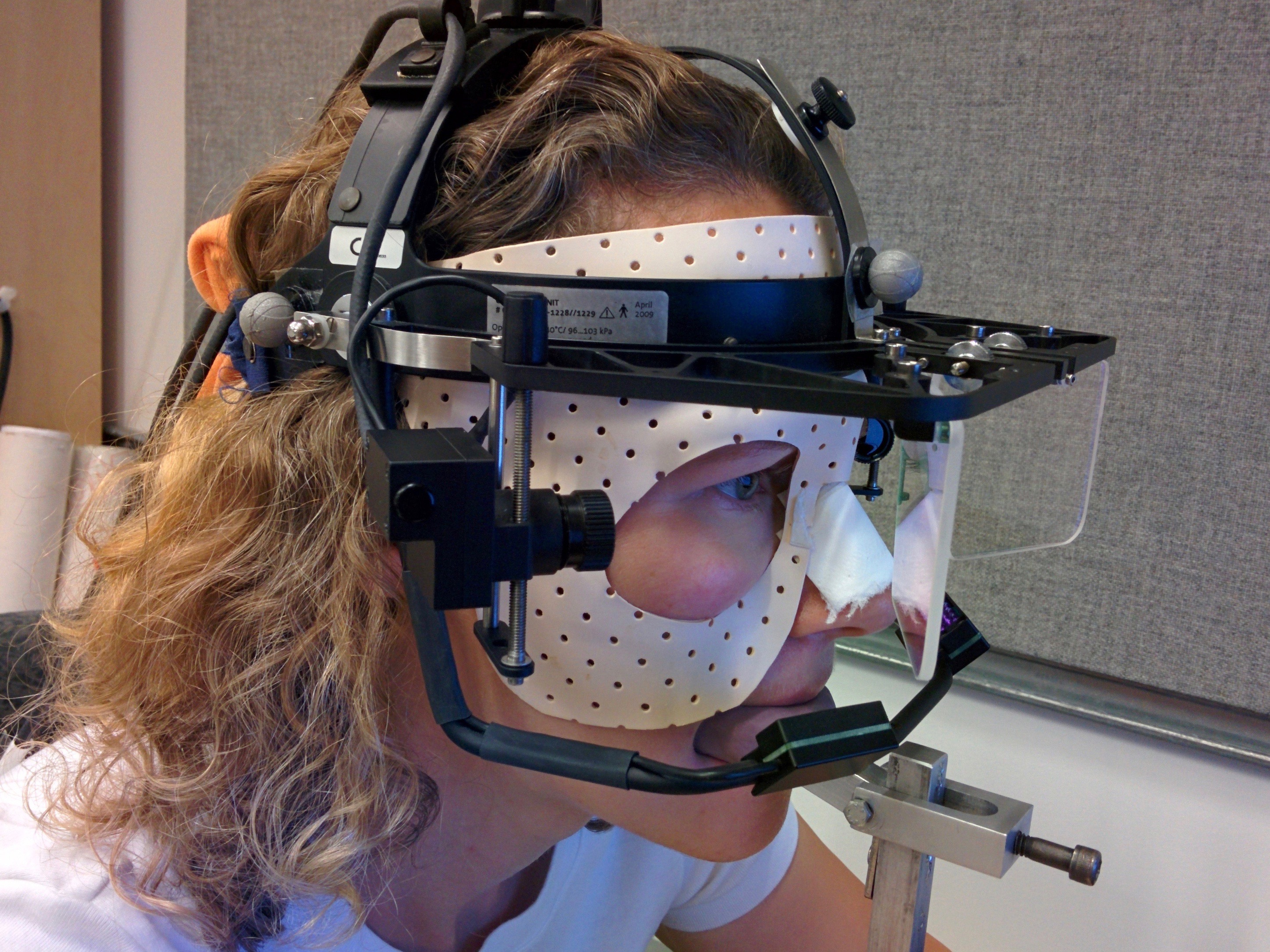 |
Hardware
Application The Chronos eye tracker can be used to record and measure 3D eye movements including torsional eye movements. We use this setup to study the control of visually-induced torsion (Edinger et al., Invest Ophthalmol Vis Sci, 2017; Wu & Spering, J Vis, 2019; Rothwell et al., 2020, in press). The SMI glasses were used in collaborative studies on gambling with real slot machines (Murch et al., Addiction, 2019; Murch et al., subm), and on hitting in a virtual-reality baseball task (Rolin et al., Addiction, 2019). |


